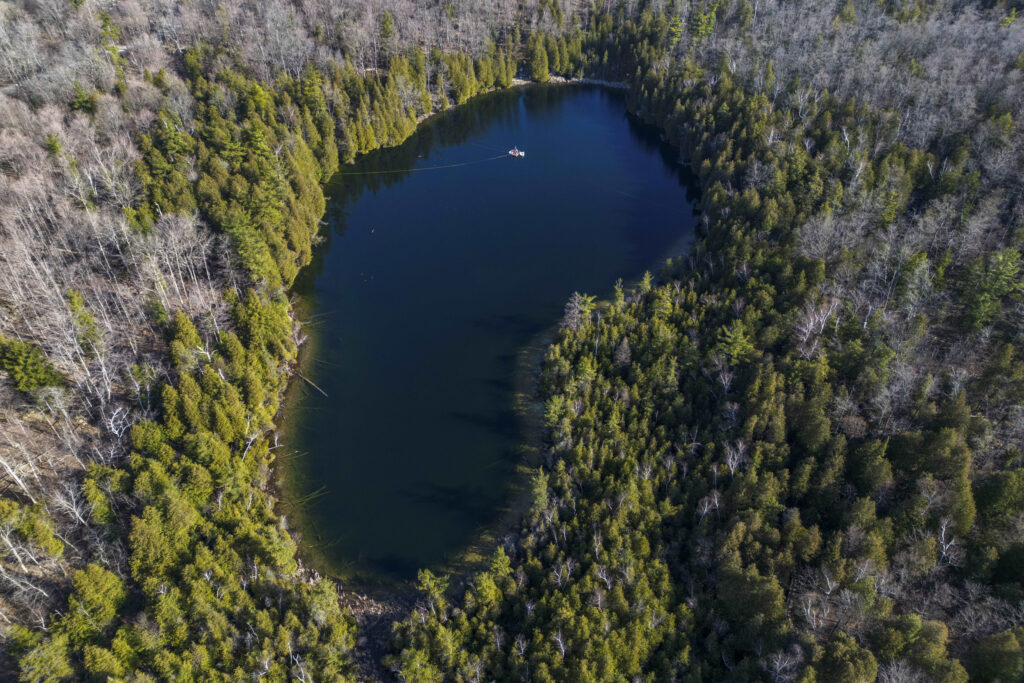It is generally agreed that decisive action has solved a variety of environmental problems over the last 60 years or so, such as eliminating the choking smog common in cities from LA to London in the 1940s and ’50s, then the kind of water pollution that saw Lake Erie and London’s Thames River pronounced biologically dead by 1970 while the Cuyahoga River infamously actually caught fire in 1969 and not for the first time. Then acid rain and the hole in the ozone layer. The latter, we are told, was solved by the Montreal Protocol in 1987 which imposed a global ban on the use of chlorofluorocarbons (CFCs), the gasses deemed responsible for the problem. The treaty was such a success it became a template for climate negotiations under Kyoto and Paris, in which expert scientific panels run their models and dictate terms to compliant and well-meaning government delegates. The proponents of this model have ever since pointed happily to evidence that the ozone hole was closing up. But here’s a weird story: The hole is back.
To be precise, it never went away and there isn’t just one and it’s not a hole. It always fluctuated, or rather they did, there being one hole for each pole and technically a thinning of the layer not a rupture in it, though the big one is over the Antarctic and it opens up each year in the austral Spring (October-November) then gradually closes over the following months. The theory was that thanks to actions taken under the Montreal Protocol, it would still open up each year but get smaller and smaller, returning to what we assumed was its normal steady state prior to the 20th century. Though since the observations depend on satellites which were only launched in the late 1970s no one really knows what the ozone layer was doing before that.
When the hole was recently found to be growing again the immediate response was that we need to enforce the Montreal Protocol. But it has been in force since 1987 and by common consent has been successfully enforced at the global level for decades. So a few people asked another question: What if we don’t really understand the atmosphere as well as we thought?
What if, for instance, the ozone hole has always followed long-term multidecadal cycles as well as the annual ones? What if it expanded over the years when CFC use was expanding, and contracted when they were phased out, but the relationship wasn’t entirely or even primarily cause-and-effect? What if it has come and gone for centuries for natural reasons?
We are not rushing to embrace this theory. We are not even sauntering over. What we are doing is insisting that science proceed by claim and counterclaim, thesis, test and challenge, not by enforcements from the Church of Gaia and excommunication of heretics.
If it is indeed the case that man-made CFCs and other chemicals deplete atmospheric ozone we need to make sure they are not released in significant amounts. Including discovering whether this unexpected development is, in fact, the result of far more CFCs being released than we currently realize, which is possible given the propensity of governments to cheat on their environmental as on other commitments.
If by contrast the CFC theory turns out not to fit the facts very well, we need to discover whether humans are doing something else that is causing a problem or, alternatively, whether we are in the presence of a vast natural cycle that may have agreeable and disagreeable phases but is not under our control. It’s called having an open mind.
It requires humility and a willingness not to start chanting slogans for fear of losing political momentum. And in the poisoned atmosphere of modern debate, including around climate, it’s highly probable that anyone who questions received wisdom will be accused of having ulterior motives of a shameful, venal sort. But here let us note in passing a new study claiming nitrous oxide is a killer greenhouse gas 300 times more powerful than CO2 and that most of it comes from agriculture.
If this claim is true it means much of what we think we know about global warming is wrong, and most of our proposed remedies are off the mark, at least in targeting less urgent things in a time of crisis. Nor does it mean we should not act. It means we should think about how we are acting precisely because now is no time to waste resources on futile and misdirected gestures.
Recently Canada’s Health Minister made the astounding claim about COVID-19 that “You don’t do the post-battle review in the middle of the fight” and therefore should not think about how you are responding to a crisis until it’s too late to fix any mistakes. Of course the reverse is true; the more critical something is the more important it is to think about what you are doing while you are doing it. Including on climate or ozone.
If the new N2O study is wrong, it doesn’t prove the conventional wisdom is right, mind you. Both could be wrong. Climate change could have other causes, or be less drastic than some people think, or both. And there’s an old saying highly pertinent here, that the most characteristic phrase associated with scientific progress is not “Eureka” (or perhaps “I got the grant”) but “Oh, that’s weird.”
The return of the ozone hole is weird. So whatever you do, don’t pretend it’s not.



It isn't just "climate change" that bothers me it's the twitch response and insane reactions to this "new" virus everyone is wetting themselves over. If we had an honest appraisal of what has taken place there would have been a process similar to a court of Law where evidence is presented, accumulated, verified and noted as an ongoing response to whatever it is everyone has their undies bunched up over. Do masks work? Does "social distancing" work? No serious analysis of the deaths per year change broken down by all of the different causes we experience to give us some kind of perspective on what is really happening. Nothing like that has taken place. If the total deaths by non-warfare causes is roughly the same each year we'd at least know if there was something worth worry about or not. The only thing i'm sure of is that knee jerk responses are the hallmark of fools.
Last year, a large plume of CFCs was found emanating from an industrial zone in China. I wouldn't count on compliance with the Montreal Protocol, or anything else of global significance, in China.
CFCs were useful gases for aerosol propellants due to their high critical temperature which meant that they could be liquified under pressure alone at normal temperatures. This meant that there was always a layer of liquid CFC at the bottom of the can giving a constant vapour pressure to propel the contents provided the temperature remained constant. Thus the force of expulsion of the contents remained the same over the life of the aerosol until either propellant or contents were exhausted. They were also non inflammable & they had low chemical reactivity. It is a shame that these useful substances had to be banned. Their replacements, certainly in refrigerators, were pure hydrocarbons such as cyclopentane, which is of course highly inflammable. Maybe we picked the wrong culprit, poor old CFCs are not to blame at all.
I think the behavior is the same because the motivation is the same.
To destroy the world economy, create chaos and discord, then usher World Communism in.